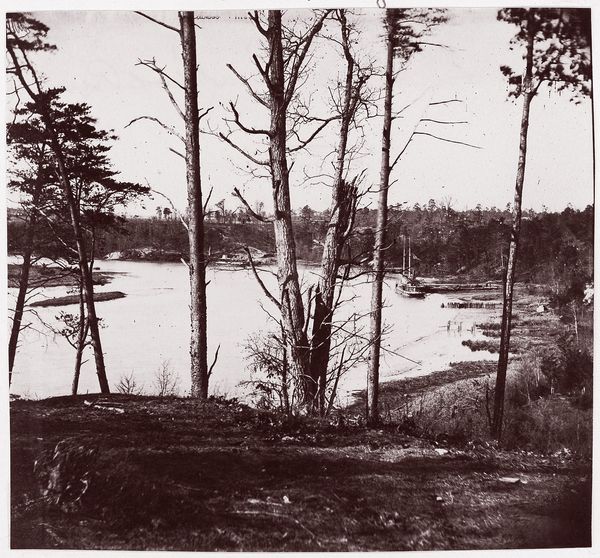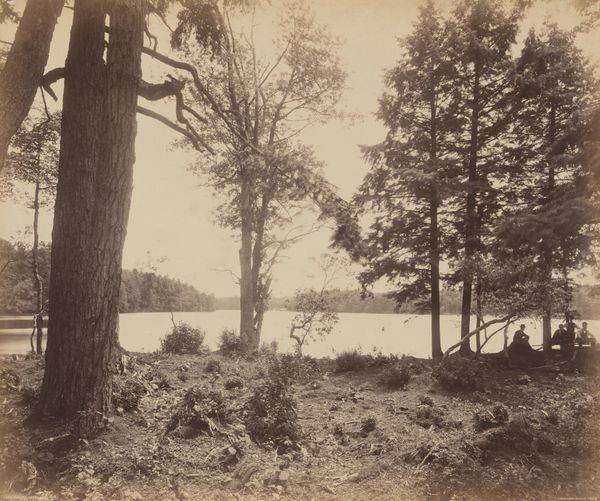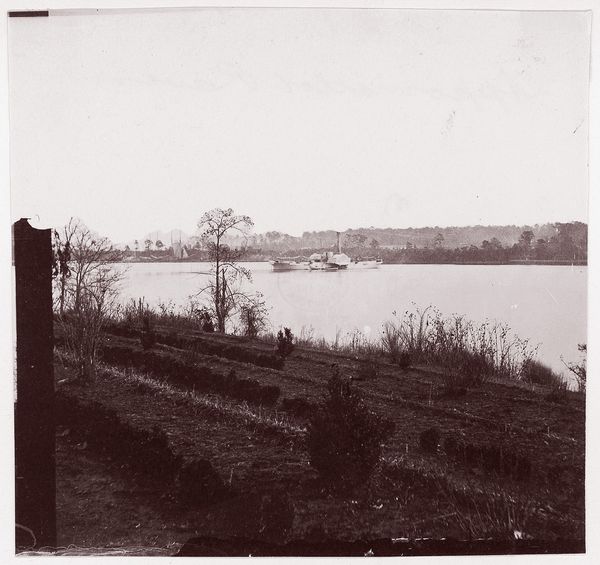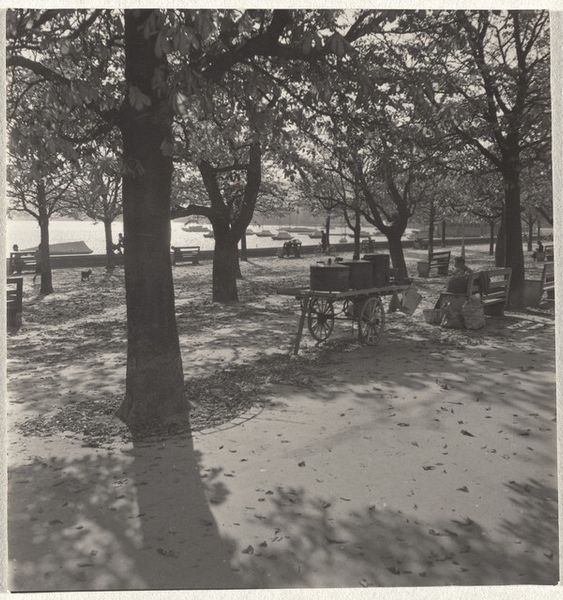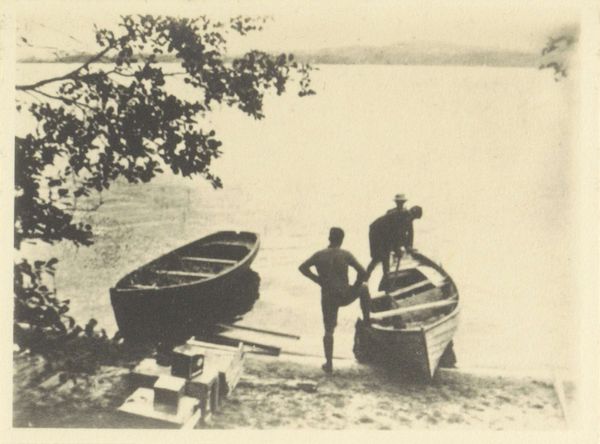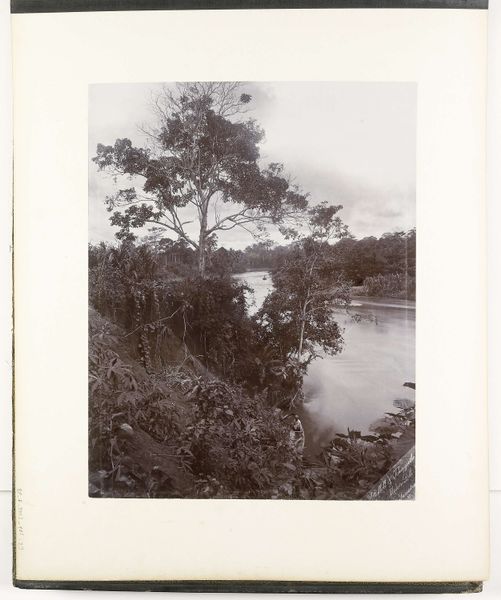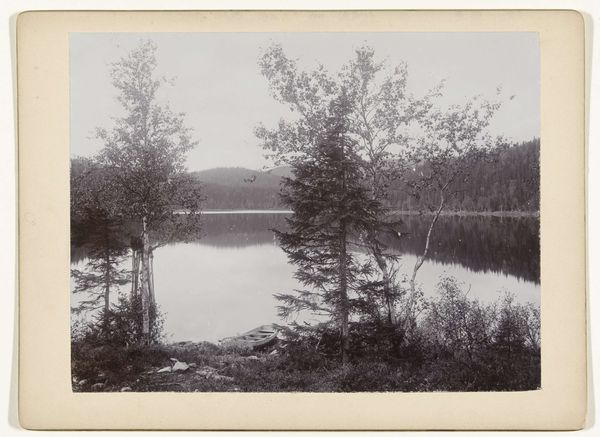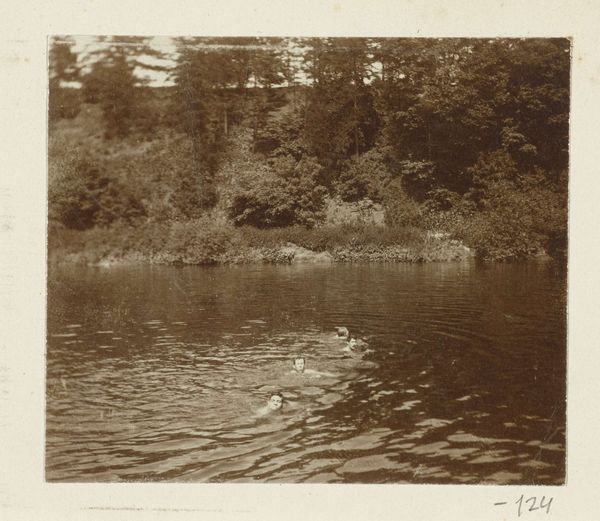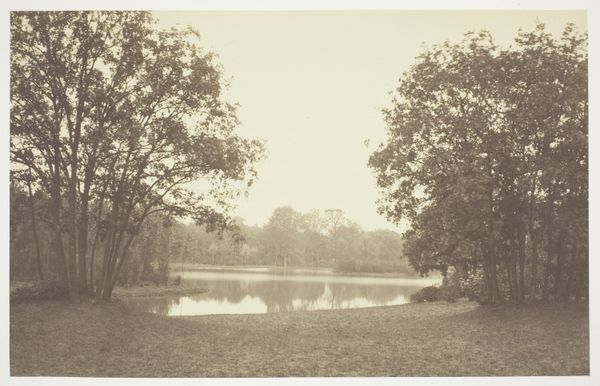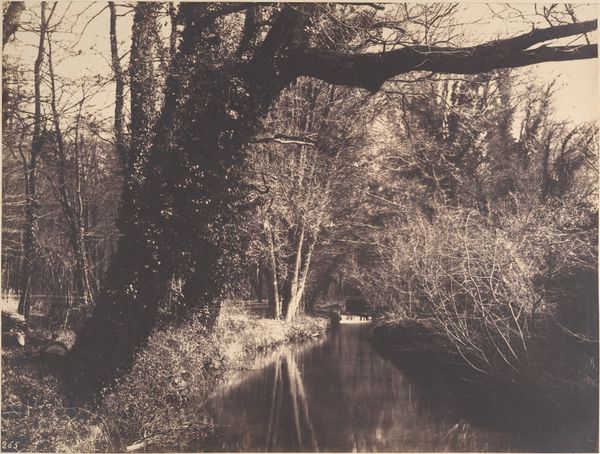
photography, gelatin-silver-print
#
black and white photography
#
war
#
landscape
#
river
#
nature
#
photography
#
outdoor loving
#
gelatin-silver-print
#
monochrome photography
#
realism
#
monochrome
Copyright: Public Domain
Curator: This is Timothy O’Sullivan’s photograph, “Cobb's Hill, Lookout in Distance,” taken in 1864. It’s a gelatin-silver print, currently held at the Metropolitan Museum of Art. Editor: My initial reaction is the overwhelming sense of stillness, almost a hushed reverence in this captured scene. The monochrome palette simplifies the complex visual textures of nature and man. Curator: It's a potent landscape, isn't it? O'Sullivan was known for photographing the American Civil War, and this image, while seemingly devoid of immediate conflict, speaks volumes about the human presence within a landscape marked by war. Consider the solitary figure to the right. Editor: I'm struck by how this figure interacts with the geometry of the scene, especially how the line of sight guides your eye towards the lookout tower on the horizon. O’Sullivan’s command of light creates a stark tonal contrast here that amplifies the subject, almost a sentinel watching the unknown. Curator: That tower on Cobb's Hill becomes an uneasy emblem. O’Sullivan often used these visual cues—the blasted trees, the ravaged earth—to signify a deeper emotional and psychological toll. Think about what “lookout” might mean. Who is watching, what are they looking for, and from what perceived threat? Editor: Yes, the psychological tension is palpable! The photographic perspective here constructs this scene of observation itself. O'Sullivan's compositional restraint highlights the relationship between human form, architectural shape, and natural composition. Curator: And that specific visual vocabulary is crucial. O'Sullivan is telling us something beyond what is immediately visible. The emotional landscape here mirrors the fractured state of the nation. He implicates viewers as distant observers, even today. Editor: Indeed. He creates not just a document but a silent invitation for reflection upon ruin. Thinking of form again, that nearly-bare tree becomes a structuring agent in the design. Curator: In his stark documentation of the Civil War, O’Sullivan leaves us with this haunting view. There’s so much packed in here. Editor: Exactly, it goes far beyond historical record. It transcends simple representation to embody ideas of observation, damage, resilience and historical memory.
Comments
No comments
Be the first to comment and join the conversation on the ultimate creative platform.
